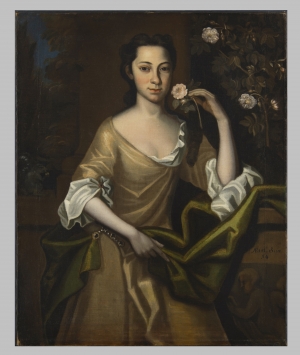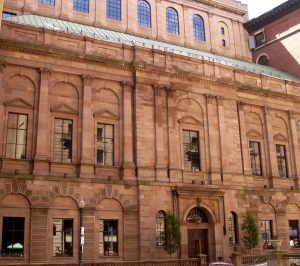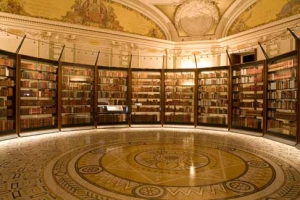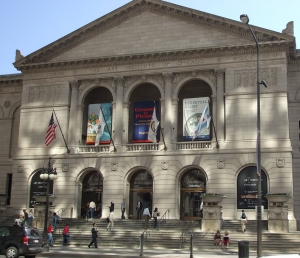|
Displaying items by tag: maps

In the first exhibition of its kind in 50 years, the DeWitt Wallace Decorative Arts Museum, one of the Art Museums of Colonial Williamsburg in Virginia, is presenting the exhibition "A Rich and Varied Culture: The Material World of the Early South." The show, which features more than 400 objects drawn from the Colonial Williamsburg collections, will include a dozen categories of media and represent four geographic regions of the South -- the Chesapeake region, the Carolina Low Country, the Backcountry South, and the Gulf Coast. Works from 10 other institutions and 14 private collections will also be exhibited.
Together, furniture, paintings, prints, metals, ceramics, mechanical arts and arms, architectural elements, archaeological objects, rare books, maps, costumes, accessories and musical instruments will tell the story of the region’s population from the 17th century through 1840 as it expanded westward and southward toward the frontier. Each of the works on view has undergone exhaustive research, which has yielded some unexpected findings. For example, a painting of Frances Parke Custis, on loan from Washington and Lee University, was revealed to be the work of the Brodnax Limner, a little-known artist who worked in Virginia during the 1720s.
Ronald L. Hurt, the Colonial Williamsburg Foundation’s vice president for collections, conservation, and museums and its Carlisle H. Humelsine Chief Curator, said, “The early American South has long been depicted as a society that produced almost none of the objects used by its substantial populace. However, the opposite is true. Southern artists and artisans generated a vast body of material in virtually every medium. The abundance and diverse cultural resonance of these goods will be powerfully conveyed by the objects assembled for this exhibition.”
"A Rich and Varied Culture: The Material World of the Early South" was entirely funded by Williamsburg residents, Carolyn and Michael McNamara. The exhibition will be on view at the DeWitt Wallace Decorative Arts Museum for five years, until 2019.
When he collected maps, Winterthur Museum founder Henry Francis du Pont brought to them the same discerning eye for color, form, and verity he applied throughout the collection. His correspondence with dealers was always polite though brief; understandable, given the sheer number of “rarities of every description” offered to him for sale. The letters also indicate du Pont’s curiosity about certain material aspects of maps—their format for display and early color.

On September 25, 2013 The Boston Athenæum will present the exhibition Collecting for the Boston Athenæum in the 21st Century: Paintings and Sculptures. The show will feature a portion of the 50 works the Athenæum, which is one of the oldest independent libraries in the United States, has acquired since 2000.
Highlights from the upcoming exhibition include nineteenth century portraits by William McGregor Paxton, early genre paintings by William Holbrook Beard, scenes of Boston by Frank Duveneck, works by prominent Boston School artist William Morris Hunt, and paintings by the Ashcan painter John Sloan. Collecting for the Boston Athenæum will also include a number of important paintings that have been promised as future gifts to the institution.
The Boston Athenæum began collecting significant works of art shortly after its founding in 1807 and held its first formal exhibition in 1827. It continues to acquire works through gifts and purchases and recently received a grant from the National Endowment of the Art for the compilation of a comprehensive, scholarly catalogue of its fine art collection, which includes books, maps, manuscripts, prints, photographs, paintings and sculptures.
Collecting for the Boston Athenæum, the first in a series of four exhibitions to be held in the institution’s Norma Jean Calderwood Gallery between 2013 and 2018, will be on view through February 15, 2014. Together, the exhibitions will celebrate the Athenæum’s commitment to scholarship, preservation and the dissemination of knowledge as represented by its extensive collections of rare and unique materials.
Historic Deerfield’s President Philip Zea will lead a trip September 6-9, 2013 to view premier collections of antiques and decorative arts in Chicago and Milwaukee.
The trip includes special tours of five outstanding private collections and three remarkable area museums. Private collections include two top American decorative arts collections, an American folk art collection, Crab Tree Farm, and the MacLean Map and Book Collection. Special museum tours include the Art Institute of Chicago, Driehaus Museum, the Milwaukee Art Museum and a presentation and private viewing at the Chipstone Foundation’s Fox Point Georgian mansion of the foundation’s founders Stanley and Polly Stone. You can register by calling 413-775-7176. A few slots are available. See www.historic-deerfield.org/trip for details.
Today, with GPS and MapQuest at our fingertips, maps often function simply as navigational tools, but historically they played a much more diverse role, shaping everything from commercial to social activities. Common Destinations: Maps in the American Experience at Winterthur takes you on a journey through two centuries that included colonial wars, nation building, and industrialization. It features selections from Winterthur’s collection of traditional maps in a variety of formats as well as rare map-related objects such as pocket globes, ladies’ fans, and printed handkerchiefs.

As part of its Civil War in America exhibition, the Library of Congress in Washington, D.C. is exhibiting the John Hay copy of the Gettysburg Address through May 4, 2013. The manuscript went on view on March 22, 2013 in the Library’s Thomas Jefferson Building. Admission is free and open to the public Mondays through Saturdays.
The Gettysburg Address is one of the best-known speeches in American history. Delivered by President Abraham Lincoln during the Civil War on November 19, 1863 at the dedication of the Soldiers’ National Cemetery in Gettysburg, PA, the Gettysburg Address took place four and a half months after the Union armies defeated those of the Confederacy at the Battle of Gettysburg. The Battle of Gettysburg, which saw the largest number of causalities in the Civil War, is often considered the war’s turning point. Widely recognized as a literary masterpiece, the Gettysburg Address conveys in some 270 words the principles upon which the nation was founded, honors the men who had lost their lives in battle, and asks all citizens to renew their commitment to freedom and democracy.
The John Hay copy of the Address is the second of five known manuscript drafts. Lincoln personally gave the copy to Hay, one of his two secretaries. His other secretary, John Nicolay, is believed to have the first draft, known as the Nicolay copy. Hay’s descendants donated the Hay and Nicolay copies of the Gettysburg Address to the Library of Congress in 1916.
Civil War in America, which opened on November 12 2012, commemorates the 150th anniversary of the Civil War and includes diaries, letters, maps, song sheets, newspapers, photographs, drawings, and artifacts that reveal the complexity of the Civil War through the individuals who experience it firsthand. The exhibition is on view through January 1, 2014.

The latest update to Google’s browser-based map service allows visitors to navigate museums across the world with their smartphones. While sprawling institutions made up of various wings and galleries can appear cumbersome, Google hopes to alleviate confusion by making virtual floor plans for dozens of museums and libraries in nine countries available to users.
The recent update includes interior views of shopping malls, airports, train stations, and convention centers, but the presence of museum layouts is particularly welcomed. While 30 museums in the United States are currently mapped out, museums that are not already included can upload their own floor plans if they wish to be included in the project.
Maps of the American Museum of Natural History in New York, the Art Institute in Chicago, the Freer Gallery of Art in Washington, the British Museum in London, the National Museum of Denmark in Copenhagen, and the National Museum of Emerging Science and Innovation in Japan are currently available.
|
|
|
|
|